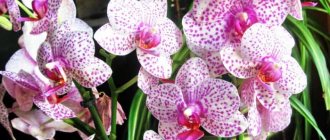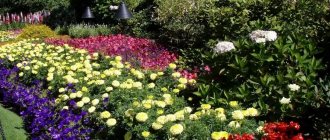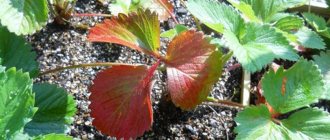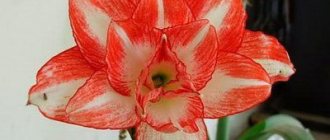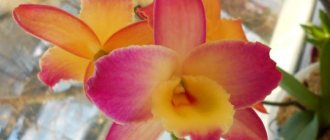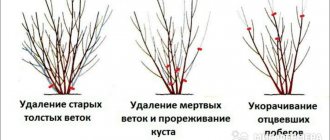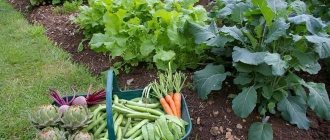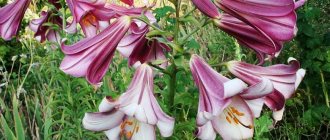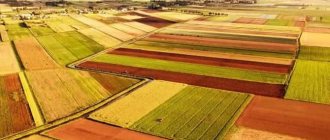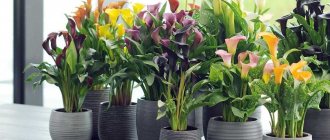Flowering time of perennials you need to know when forming a flower bed of continuous flowering. It is in the spring that you need to think about which perennials are best to plant so that your dacha has a beautiful flower garden all season. You can also choose your favorite range of colors and choose the best combinations. We offer you a convenient table with the ability to sort. Depending on the conditions of your site, the flowering period, and the height of the plants, you can choose perennials to create or update a flower bed.
continuously blooming garden is the dream of every amateur gardener. Of course, a garden in which all the plants would simultaneously burst into flames like colorful fireworks would be stunningly beautiful.
True, later, when all the colors faded from the flower beds, it, alas, would take on a rather dull and monotonous appearance. No, a garden that has something to admire at any time is much more attractive. So decorate your flower beds so that they delight you with their colors all year round.
The most important method of such design is the selection of plants taking into account their flowering time. Our flowering chart will make this task easier for you.
Welcome spring with a garden planted with colorful spring-flowering plants, create lush summer flower beds and don't forget to take care of bright floral accents for autumn. And even for the latest autumn, the calendar will have its favorites.
Spring perennials
Meadow lumbago , like Caucasian doronicum , oak anemone , noble liverwort and Caucasian rhizome , are among the first to bloom under the spring sun.
Meadow lumbago
Doronicum Caucasian
Anemone oak forest
Noble liverwort
Rezuha Caucasian
Brunnera macrofolia
Hellebore black
Various geraniums
Know your enemy by sight: plant allergens
Allergenic plants can be divided into three large categories depending on the time of flowering: spring, summer and summer-autumn. The first group includes trees, the second includes meadow grasses and cereals, and the third includes weeds.
It is worth saying that predominantly wind-pollinated plants are considered allergenic due to the high concentration of their pollen in the air. Pollen from insect-pollinated plants is present in the air in very small quantities, and therefore they are considered relatively harmless. These plants can be identified by the bright colors of their flowers and strong smell, which serve to attract insects.
Tree flowering: April – May
The hay fever season opens at the end of March - beginning of April, when the willow blooms. Following this, willow, alder and hazel bloom in April, then aspen and poplar. By the way, contrary to popular belief, poplar fluff itself does not cause allergies: its danger lies in its ability to transfer pollen from other, more allergenic plants - including conifers and cereals.
At the beginning of May, birch, maple, oak begin to bloom, coniferous trees and large shrubs - apple tree, hawthorn, cherry, viburnum - bloom.
Flowering of cereal plants: June – August
During the three summer months, intensive flowering of meadow plants and cereals occurs. In June, dandelion, thistle, and foxtail begin to bloom, and linden also blooms in central Russia. In July, fescue, timothy, bluegrass, wheatgrass, elecampane, motherwort, and datura bloom. In August, carnations, cornflowers, wormwood and ragweed begin to bloom.
Summer is the most dangerous time for people prone to allergies, since it is during the summer that most known allergenic plants bloom simultaneously. Depending on sensitivity to one or another of them, a person can suffer an acute outbreak of hay fever several times during the season.
Flowering of weeds: August – October
In early autumn, most weeds bloom - quinoa, wormwood, nettle, foxglove, ragweed. At the end of September, flowering gradually stops, but pollen still remains in the air for some time. It happens that pollen settles on tree branches and fallen leaves, so the risk of allergies continues until mid-October.
Autumn perennials
Lush umbrellas of sedum , blooming rudbeckia and autumn aster are a real autumn storehouse of nectar for butterflies and bees.
Sedum creaking
Aster novobelgica
Rudbeckia Sullivanta
Aster cushion
Dendranthema grandiflora
Monarda hybrid
Black cohosh simple
Carmichel wrestler
Treatment and prevention
In modern medicine, so-called allergen-specific immunotherapy, or ASIT, is used to treat allergies, including hay fever. This method is based on a gradual decrease in the body's sensitivity to a specific allergen and works on the principle of a vaccine: weak doses of the allergen are systematically administered to the patient over a long period of time. As a result of therapy, the body gets used to interacting with the allergen, adapts and develops a less destructive reaction mechanism to this irritant. The effectiveness of ASIT has been scientifically proven and confirmed by the results of studies conducted around the world.
The duration of ASIT is, on average, from 2 to 5 years, with a noticeable effect from treatment occurring after one year of therapy. As a rule, the allergen is injected into the patient under the skin, but in some cases - including severe fear of injections in children - it is placed under the tongue. It is recommended to start ASIT for hay fever several months before the start of flowering - preferably in winter.
To relieve the symptoms of hay fever, antihistamines, nasal and eye drops are used. If allergies also manifest themselves in the form of skin reactions, it is necessary to use ointments and creams with anti-inflammatory and antihistamine effects.
An allergist will help you draw up a detailed course of treatment. It is advisable to visit it before the dangerous season begins - it is best to do this in late autumn or winter. When diagnosing hay fever, skin allergy testing, a blood test and a cytological examination of a smear of the nasal mucosa may be necessary. The data obtained will help the doctor when drawing up a treatment program and preventive recommendations.
Preventive measures for hay fever:
- Wet cleaning your home more often
will help reduce the amount of pollen in the air. If possible, ventilate the room through a window curtained with a damp cloth to trap pollen particles coming from the street. It is advisable to dry washed items indoors to prevent pollen from settling. - Eliminate potentially dangerous foods from your diet.
Allergy sufferers are advised to avoid consuming any type of honey as it may contain allergenic pollen. If you are sensitive to pollen from cereal plants, reduce the consumption of cereals and their derivatives - porridge, sunflower oil, seeds, halva, kozinaki. If the allergic reaction is caused mainly by tree pollen, you should eat less fruits, nuts and berries. Regardless of the type of allergen, it is recommended to stop taking various herbal remedies. - Rinse your throat and nose thoroughly when returning from the street.
When outside the home, keep wet wipes with you and periodically wipe exposed areas of your body with them, particularly your face and hands. It is advisable to store street clothes separately from the rest. - Don't neglect your wellness treatments.
Today, there are many practices available to improve the health of the respiratory system. Haloghygiene - visiting salt rooms and haloinhalation - is one of the most effective and simple methods of combating respiratory diseases and hay fever: tiny particles of salt settling on the walls of the mucous membrane of the eyes and respiratory organs have a powerful cleansing effect and relieve inflammation. Halohygiene sessions can be performed outside the home, visiting a salt cave, or at home using special devices - haloinhalers.
Read also: Halotherapy in the treatment of hay fever
Flowering chart of perennials with sorting
Flowering perennials. Convenient table with the ability to sort by columns.
| Flower name | Photo | Light | The soil | Height, cm | Coloring | Flowering month |
| Yarrow | Sun | dry humus | 60 | red yellow white orange purple | 6-7-8-9 | |
| Astilbe different types | partial shade shadow | wet humus | 40-120 | white pink red | 5-6-7-8-9 | |
| Aster cushion | Sun | slightly moist humus | 15-40 | purple red white | 8-9-10 | |
| Geranium different types | partial shade sun | fertile humus | 20-60 | white pink red purple | 5-6-7-8 | |
| Common catchment | penumbra | lime humus | 50 | purple blue pink white | 5-6 | |
| Spur different varieties | Sun | fertile humus | 100-200 | blue white | 7-8 | |
| Anemone oak forest | partial shade shadow | wet humus | 15 | white | 4-5 | |
| Hellebore black | partial shade shadow | lime humus | 25 | white | 3-4-5-11 | |
| Black cohosh simple | shadow | dry humus | 140 | white | 9-10 | |
| Rezuha Caucasian | Sun | dry sandy | 20 | white | 4-5 | |
| Bearded iris hybrids | Sun | dry clay | 90 | all colors | 5-6-7-8 | |
| Marsh marigold | Sun | wet swampy | 30 | yellow | 4-5-6 | |
| Rudbeckia Sullivanta | Sun | clayey fertile | 100 | yellow | 8-9-10 | |
| Krupka | Sun | lime dry | 10 | yellow | 4-5 | |
| Doronicum Caucasian | Sun | fertile humus | 40 | yellow | 5-6 | |
| St. John's wort | Sun | fertile humus | 30 | yellow | 7-8-9 | |
| Goldenrod | Sun | fertile humus | 80 | yellow | 7-8-9 | |
| Coreopsis whorled | Sun | fertile humus | 60 | yellow | 6-7-8 | |
| Elecampane magnificent | partial shade sun | loose fertile | 150 | yellow | 7-8 | |
| Ten-petalled sunflower | Sun | dry fertile | 120 | yellow | 8-9 | |
| Centranthus red valerian | Sun | limestone loose | 60 | carmine pink | 6-7-8 | |
| Sedum creaking | Sun | wet rocky | 50 | red | 9-10 | |
| Monarda hybrid | Sun | slightly moist humus | 70-120 | red | 7-8-9 | |
| Milky flowering peony | Sun | clayey fertile | 40-100 | everything except blue | 5-6 | |
| Krasodnev (daylily) hybrid | partial shade sun | fertile humus | 50-110 | everything except blue | 6-7-8-9 | |
| Dendranthema grandiflora | Sun | fertile humus | 40-100 | everything except blue | 9-10-11 | |
| Lavender angustifolia | Sun | dry fertile | 40 | blue-violet | 7-8 | |
| Chinese swimsuit | partial shade sun | clayey humus | 90 | light orange | 6-7-8 | |
| Carmichel's wolfsbane or aconite | partial shade shadow | wet humus | 130 | blue | 9-10 | |
| Bellflower peach | partial shade sun | lime humus | 80 | blue | 6-7-8-9 | |
| Alpine eryngium | Sun | calcareous fertile | 80 | blue | 7-8 | |
| Brunnera macrofolia | penumbra | fertile humus | 50 | blue | 4-5-6 | |
| Scabiosa caucasica | Sun | fertile humus | 80 | blue-violet | 6-7-8-9 | |
| Oak sage | Sun | loose fertile | 30 | blue-violet | 6-7 | |
| Noble liverwort | partial shade shadow | wet humus | 10 | purple | 4-5 | |
| Meadow lumbago | Sun | loose humus | 20 | purple | 4-5 | |
| Fassin's catnip | Sun | dry clay | 25 | purple | 6-7-8-9 | |
| Aster novobelgica | Sun | loose fertile | 140 | violet - blue | 9-10 |
Online store Fazenda plus
What is hay fever?
Hay fever, or allergic rhinitis, is a seasonal chronic disease that occurs due to the increased sensitivity of the human body to pollen from various plants.
Exacerbation of hay fever occurs in the warm season - late spring, summer and early autumn. The widely accepted historical name for this disease is “hay fever.” This unique term was proposed in 1819 by the English physician John Bostock: annually observing the characteristic symptoms of lacrimation, runny nose and sneezing, the doctor suggested that their appearance was associated with hay, which is harvested in the summer. However, already in 1873 it was proven that pollen is the cause of the development of hay fever.
Causes of hay fever
For a person who is not prone to an allergic reaction, the pollen of a flowering plant is absolutely harmless. The body of an allergy sufferer perceives the smallest particles of pollen as harmful elements and, when interacting with them, reproduces a powerful inflammatory response - a kind of counterattack, during which the cells and tissues of the body itself are damaged.
Pollen of some plants under a microscope (magnification 500 times).
In the case of hay fever, this occurs mainly in the summer - during the flowering period. Wind-pollinated plants pose a particular danger: their pollen has the ability to be transported by air and travel long distances. As a result, the air becomes saturated with tiny pollen particles up to 0.04 mm in size, which easily penetrate the respiratory tract and settle on the mucous membranes, provoking the development of an allergic reaction.
Depending on geographical features, hay fever can be observed in a significant proportion of the region’s population – up to 20%. As a rule, residents of northern regions suffer from pollen allergies much less often than residents of southern territories, although they cannot be completely excluded from the risk group. Moreover, the development of hay fever can be genetically determined: if both parents are prone to allergies, their child will also become allergic with a probability of 70-80%.
Symptoms of hay fever
The main affected area for hay fever is the eyes and respiratory organs. Patients experience a runny nose, swelling of the nasal mucosa, and sneezing attacks that appear at night or early in the morning. A dry cough often appears, accompanied by a sore throat: unlike a cough caused by ARVI, it lasts more than two weeks and is recognized by the characteristic sensation of itching and irritation. With hay fever, the mucous membrane of the eyes becomes inflamed, watery and red.
Depending on the severity of the allergic reaction, headaches, increased fatigue, weakness and loss of appetite may occur with hay fever. In particularly severe cases of the disease, as well as in the case of improper treatment, the patient may develop quite serious complications - including sinusitis, purulent conjunctivitis, bronchitis and pneumonia. In this regard, people prone to hay fever are advised to take a responsible approach to summer preventive measures.
